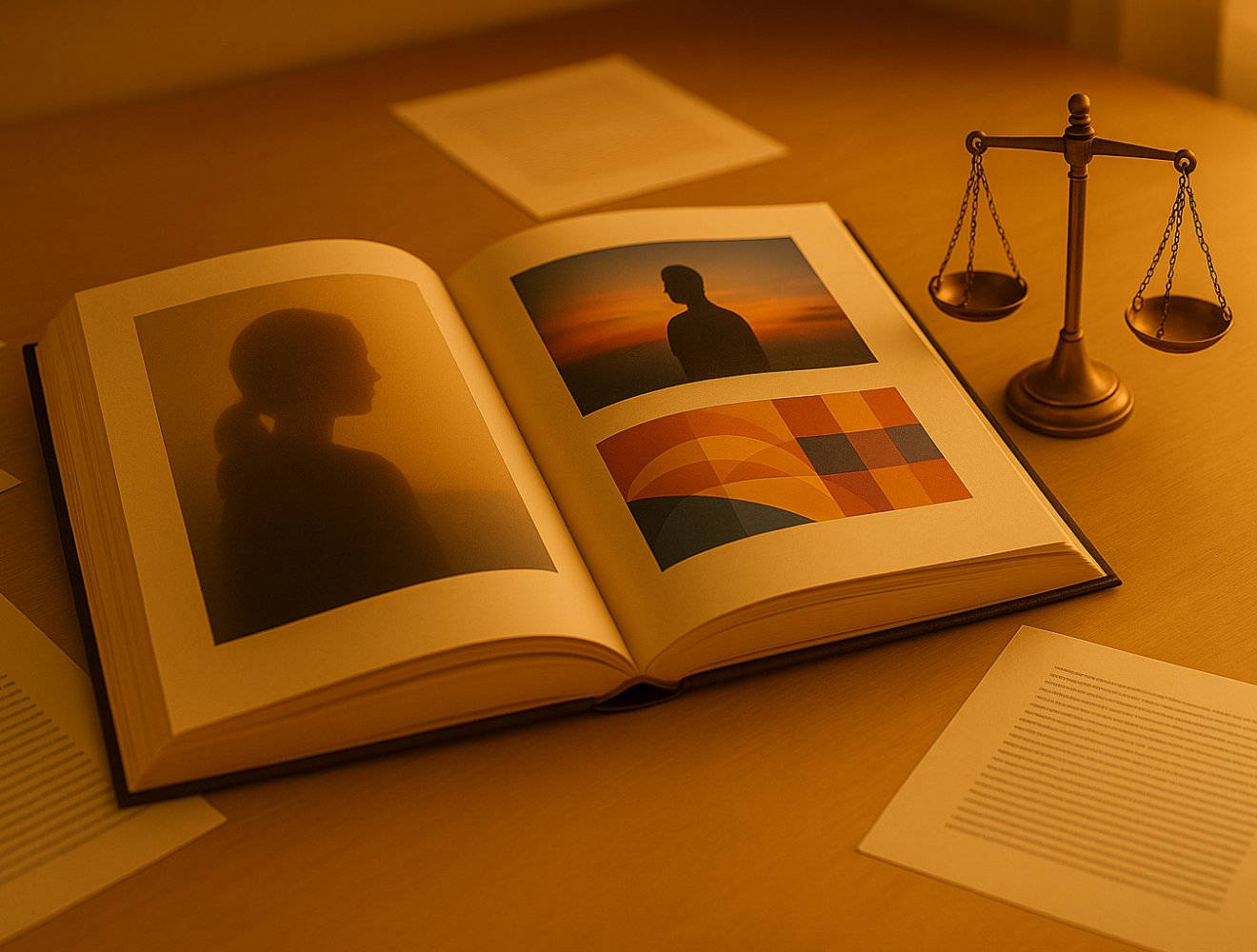In the publishing industry, the use of images is never a neutral act. Every photograph, drawing, or illustration may be protected under copyright law, and including such content in a book without proper authorization entails real legal risks: removal demands, damages, and even litigation. This article provides a practical and legally rigorous overview of when the use of online images constitutes an infringement, what the implications are of citing an unidentified author, and what exceptions are permitted by law. It also clarifies the legal distinction between photographic works and simple images, and underscores the importance of proper image credits. A concise guide for authors, publishers, and editorial professionals.
Can I use images found online in my book?
In short: no. Images found online are not free for public use, even if easily accessible through search engines or hosted on public websites. Any image that demonstrates even a minimal level of creativity is automatically protected under copyright, pursuant to Article 12 of Italian Law No. 633 of April 22, 1941. This implies that the author has the exclusive right to determine whether and how the image may be reproduced or distributed.
A widespread misconception suggests that content available online is automatically reusable. This is incorrect. Publishing content on the internet does not equate to waiving one’s rights over it. Even images without watermarks or proper attribution remain protected. The age of the image, its presence on other websites, or the absence of usage terms is irrelevant: legal protection arises from the mere act of creation.
Including images in a book — even for mere decorative purposes — constitutes reproduction and distribution, both legally significant actions. Without the right holder’s authorization, such use may constitute an infringement of the author’s economic rights, potentially resulting in takedown notices, monetary claims, or judicial proceedings.
It should also be noted that the book’s publisher may be held jointly liable for such infringements. Publishing a book is a commercial activity and carries tangible legal responsibilities.
What if the image’s author is unknown?
Many authors and small publishers ask whether they can shield themselves from liability by simply stating that the image’s author is unknown — e.g., through disclaimers such as “image sourced from the internet – author unknown.” Unfortunately, this does not provide legal protection.
Copyright law does not provide an exception in cases where the author is unidentified. On the contrary, omitting attribution increases liability exposure, as it constitutes a serious omission. Article 70 of Law No. 633/1941, which governs exceptions for criticism or discussion, explicitly requires mentioning the author’s name, the source, and the publisher, if known. If this information is unavailable, the publisher must undertake a diligent search to identify the rightsholder.
This duty — known in legal terminology as a diligent search — implies that claiming ignorance is not enough. One must be able to demonstrate concrete efforts to trace the rights holder. At the European level, this principle is enshrined in Directive 2012/28/EU on orphan works, which sets out strict conditions for using unidentified works, applicable only in specific contexts (e.g., archives, libraries, public institutions).
In commercial publishing — such as for-sale books — courts have taken a strict stance: generic disclaimers do not release the user from liability, nor are they considered acts of good faith. On the contrary, such disclaimers may be construed as conscious attempts to circumvent the law.
The most prudent course of action is to avoid using the image altogether unless the author can be identified. The better solution is to seek out alternative content that carries a clear license and explicit attribution.
When is it lawful to use copyrighted images?
In certain cases, the use of copyrighted images is permissible without prior authorization — but only under narrowly defined conditions. Article 70 of the Italian Copyright Law allows reproduction for the purposes of criticism, discussion, or teaching, provided that the use is justified by the content and the author is properly credited.
Nonetheless, incorporating protected elements into new works — such as collages — requires caution. Even if the final product is original, using “fragments” of others’ works may still infringe rights if authorization is lacking. The law distinguishes between different types of photographs, each with varying degrees of protection. Unauthorized use can give rise to legal consequences (see also: Image collages and copyright: what the law says; What is the difference between a photographic work and a simple image?).
In editorial contexts, it is crucial that the image serve a genuine textual function, rather than being merely decorative. Attribution of the author and source is mandatory. Failing to do so may result in copyright infringement, even where the image has been altered or used in a new setting.
The guiding legal principle is that the critical or educational function must prevail over any commercial interest. If the image reinforces an argument, clarifies a concept, or facilitates analysis, its use may be permissible. If the image merely enhances visual appeal, however, it is not allowed under the exception.
This distinction is particularly relevant in publishing, where many legal disputes arise from the improper invocation of Article 70. The exception is often mistakenly interpreted as a blanket right to free image use. In reality, it applies only where the use is specific, justified, attributed, and contextually appropriate.
Image credits in books
In editorial works that include copyrighted images, proper attribution is not optional — it is a legal requirement. Article 70 of the Italian Copyright Law allows the use of protected images for criticism or discussion only if the author, source, and publisher are identified, when known.
In print or digital publications, credits may appear in various formats: as captions beneath the image, as footnotes, or in a dedicated section at the end of the book. The key requirement is that the credit be accessible and clearly associated with the image. Even otherwise lawful uses may be deemed infringing in the absence of proper attribution.
Generic disclaimers such as “all rights belong to their respective owners” are insufficient. Nor is the claim that the author could not be identified a valid defense: the burden of conducting a diligent search lies with the publisher. Only when the author is truly untraceable, and the use serves a legitimate purpose (e.g., criticism or education), may it be advisable to include an open declaration inviting correction.
In the event of a reprint, revising the image credits is an essential step. If any attribution is missing, incomplete, or incorrect, the reprint represents an opportunity to rectify these omissions. Failure to correct such issues leaves the publisher legally exposed, regardless of the original publication date. Proper crediting is therefore both a legal obligation and a practical safeguard against future disputes.
© Canella Camaiora S.t.A. S.r.l. - All rights reserved.
Publication date: 6 June 2025
Last update: 16 June 2025
Textual reproduction of the article is permitted, even for commercial purposes, within the limit of 15% of its entirety, provided that the source is clearly indicated. In the case of online reproduction, a link to the original article must be included. Unauthorised reproduction or paraphrasing without indication of source will be prosecuted.

Martina Di Molfetta
Student in Communication, Innovation and Multimedia at the University of Pavia.
